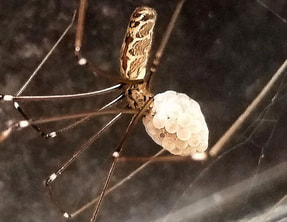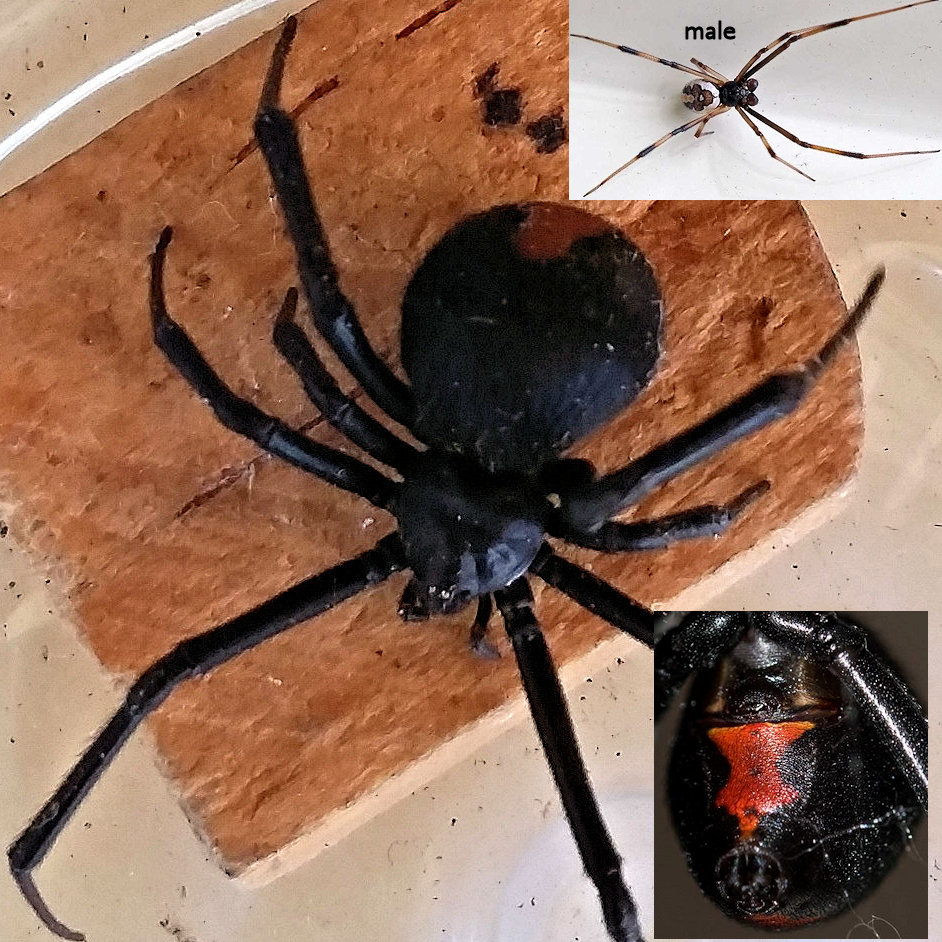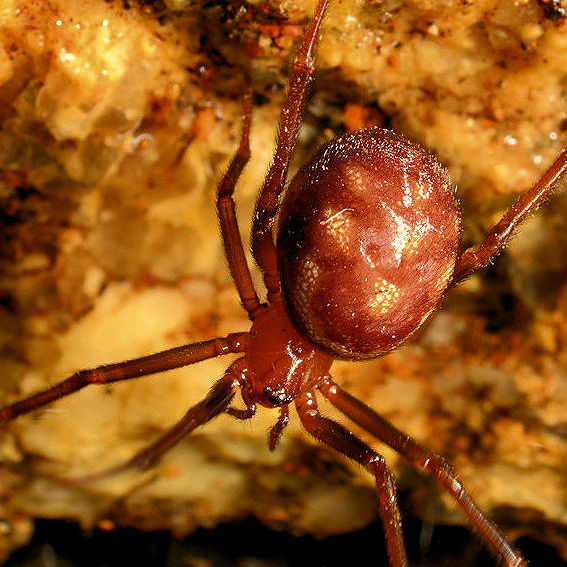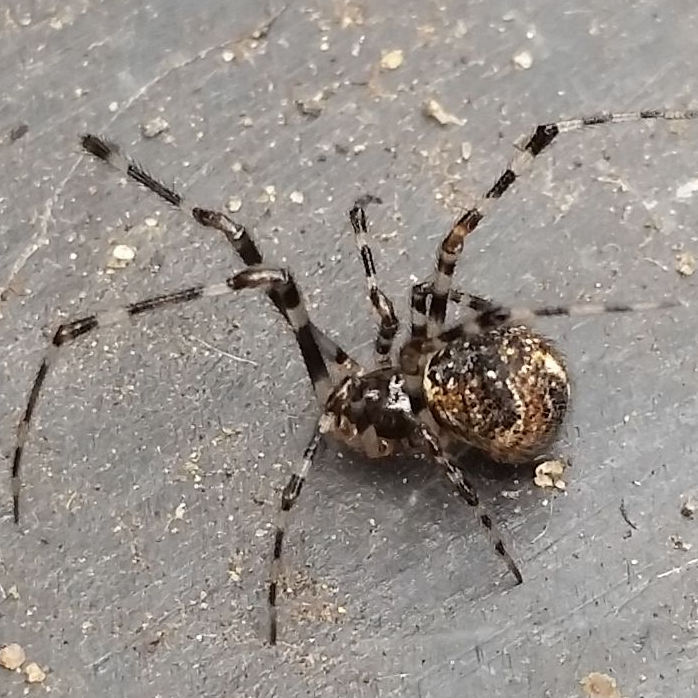Tangle Web spiders- Daddy long legs, Comb-footed Spiders, Red and Black Spider
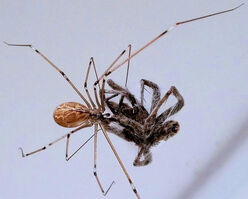 Daddy long-legs eating a huntsman Daddy long-legs eating a huntsman
Pholcidae family: Daddy long legs spiders with distinctive small bodies and very long, slender legs. They are mostly found inside man-made constructions where they build untidy webs.
More information Foxypress In praise of Daddy long legs Arachne website |
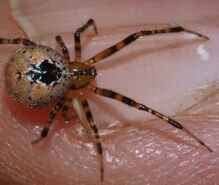 Cryptachaea veruculata
Cryptachaea veruculata
Theridiidae family, Comb-footed spiders:
Small spiders, mostly with a large abdomen and a very small cephalothorax. The males are much smaller than the females. On many species the abdomen is almost spherical and often brightly coloured.
The legs are long and slender and there is a small comb on the end of the fourth pair of legs that the spider uses for drawing out silk from the spinnerets. The web is tangled with little obvious organisation but often has contact with the ground.
Spiders in this family should be treated carefully as they have painful, sometimes systemic, and for redbacks, lethal bites.
- Redback spider (Latrodectus hasselltii) is a venomous widow spider that is commonly found inside pots or other places close to the ground but is rarely seen in Foxes Lair (under objects on or near the ground). More information Wikipedia
- Cupboard spider (Steatoda grossa) can be mistaken for a redback spider. It has a similar size, web, and egg sac but lacks the characteristic red hourglass on the underside of the abdomen. The specimen was found in my cupboard and I haven't ever seen it in the bush. Symptoms of bites include blistering at the site of the bite, muscle spasms, pain, fever, sweating, and/or a general malaise lasting for several days. More information Wikipedia
- Common House spider (Parasteatoda tepidarium) is very common around the house but not in the bush It is not aggressive but bites can cause severe pain with a median duration of 16 hours, and in some cases systemic effects; . More information Wikipedia
- Theridion sp. tangle-web spider is common in sedge understorey in woodlands. Webs commonly host small kleptoparasitic Stick Spiders (Argyrodes genus).
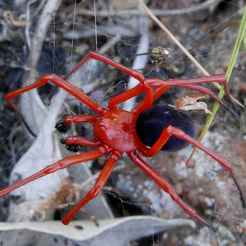
3 The Red and Black Spider (family Nicodamidae) is a colourful spider with a black abdomen, a red carapace and red and black banded legs. They hang upside down from a horizontal tangle web with downward vertical sticky threads, that they spin around rocks or other objects on the ground. Wandering males may be mistaken for the similarly coloured mouse spider (a trapdoor spider) but have much longer legs, eyes in two even rows, and lack downward facing fangs.
Further information.
Esperance Fauna- red and black spider species , Spiders of Australia - red and black spider
